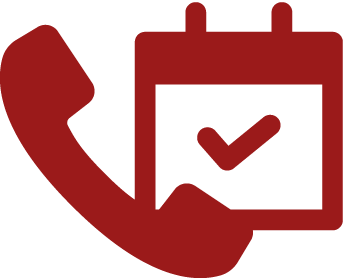
診療内容について
3つの理念
- 安全な輸血
- 適正な輸血
- 細胞治療の発展
1. 安全な輸血
輸血の安全性は過去にくらべ、格段に向上しています。日本赤十字社から供給される輸血用血液はHIV(エイズウイルス)、HBV(B型肝炎ウイルス)、HCV(C型肝炎ウイルス)の検査を全て、核酸レベルでチェックしています。しかし、検査には常に限界があり、絶えず未知のウイルスなどは否定できませんので十分な注意は必要です。
自己血輸血を推進してます。できる限り患者さんのスケジュールに合わせ、自己血を採血し保管管理しております。血管の細い患者さんからも、何とか採血致します。
安全な輸血を目指し、輸血後GVHDの予防にいち早くガンマ線照射装置を導入しました。
輸血の適合性検査は念入りに行っております。特に、不規則性抗体の検査は常により良いものを求めています。
輸血ミスの予防に最大限努めています。血液型が異なる輸血を受けると、時に重大な副作用が生じることがあります。血液型を念入りに検査し、チェックしています。輸血用血液を取り違えないように複数の職員で十分チェックしています。
2. 適正な輸血
特に、血漿分画製剤(アルブミン製剤)の適正使用に努めています。
日本は、一般にアルブミンが使われ過ぎと言われ、約40%が主にアメリカから輸入されてます。
血液製剤は国内で自給自足することが安全性のために重要です。未知の感染症、医療費の高額化を防ぐため、 そして輸血による合併症を減らすためにも不必要な輸血の使用を避けるよう努力しております。
3. 細胞治療の発展
都立駒込病院造血幹細胞移植チームとして、造血幹細胞移植を強力に支えております。
(1) 特に、当院は造血幹細胞移植を毎年100件以上行っており、骨髄処理や末梢血幹細胞の採取、保存に関する分野での経験があります。
(2) ABO不適合骨髄移植の骨髄処理、輸血療法を改良し、骨髄移植の成績の向上に寄与しております。
(3) 同種末梢血幹細胞の採取。
骨髄の代わりに血液中の造血細胞を使って、白血病や再生不良性貧血の患者さんに造血幹細胞移植を行えるようになりました。
通常は数日前から造血因子であるG-CSFを注射して、血液成分分離装置で採取致します。採取は通常2-4時間かかりますが、麻酔は必要ありません。
当科では安全な同種末梢血幹細胞の採取に努めています。
(4) 造血幹細胞移植を支える検査
フローサイトメトリーによる白血病診断。
造血幹細胞の評価、CD34陽性細胞の測定、コロニー検査。
組織適合性検査、HLA検査。
移植後の血液型精査。
(5) その他の専門技術
ドナーリンパ球の採取。CAR-T細胞療法のためのリンパ球採取。
体制
- 常勤医、非常勤医、検査技師、看護師、受付業務で都立駒込病院の輸血療法を支え、移植チームの一員として造血幹細胞移植を裏方で支えています。
- スタッフ全員、輸血・細胞治療科はただ単に交差試験をして輸血を供給すればいいのではなく、献血者の貴重な血液を大事に使い、輸血を受ける患者さんの安全を第一に考えて輸血を供給しています。
- また、今後の医療の発展の中で輸血・細胞治療科は、造血幹細胞移植を始めとする細胞治療(再生医療)を担って発展して行かねばならない科であることを自覚して日常の業務に励んでおります。
English Version
Major 3 policies
- Provide safe blood products for patients.
- Keep appropriate use of blood products.
- Promote cell therapies.
We have been made efforts to provide safe blood products with good quality for all of patients. For that reason, it is important to confirm blood type and to detect alloantibodies against red cell antigens. In our laboratory, antibody screen is routinely performed for all of patients who will be received transfusion. In our hospital, any mistransfusion of red blood cells has not occurred for recent twenty years in spite of roughly 7,000 red cell transfusions per year.
In Japan, the shortage of blood products is concerned in future as well as in USA because blood donor population becomes of advanced age and decreases. Therefore, it has been more important to use blood appropriately not only to prevent shortage of blood products. Appropriate use of blood products can minimize harmful effects of transfusion from patients, decrease incidence of mistransfusion, and save medicl expenses.
Albumin is consumed in Japan most in the world, so Japan imports over 50% of albumin used from USA. Fully domestic supply of blood components is an important issue to keep safety of blood products. Remember non-heated blood coagulation factor eight imported from USA caused HIV infection to many patients. Transfusion Service manages albumin products and try to avoid abuse o albumin by obtaining the cooperation of clinical division. We can save medical expenses of 300-500 thousand US dollar annually.
Another important work for our division is related with hematopoietic stem cell transplant. We manage bone marrow harvesting, peripheral blood stem cell collection, and cord blood, and also process these cells for transplantation therapy. We do our best to support transplantation therapy as a member of the Hematopoietic Stem Cell Transplantation team of our hospital.
Introduce Medical doctors of the Division of Transfusion and Cell Therapy
・Yoshiki Okuyama, MD
Speciality: Transfusion Medicine, Immune-hematology.
e-mail address:yoshiki_okuyama@tmhp.jp
・Kyoko haraguchi,MD
Speciality: Transfusion Medicine, Immune-hematology.



